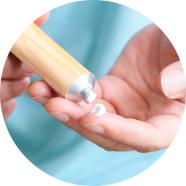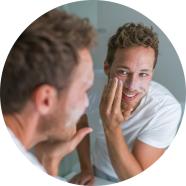
What is meant by pruritus/prurigo?
Pruritus is a symptom more commonly known as itching while prurigo covers all skin lesions caused by pruritus.
Itching is an unpleasant sensation that leads to scratching, through a reflex phenomenon, which is therefore difficult to control. Scratching provides temporary pain relief that gives way to pain. Attacks occur one after another, often so severe, that they prevent falling asleep and/or cause night waking. This means pruritus significantly alters quality of life.
There are many causes of pruritus
Many skin diseases cause itching

Chronic or acute inflammatory diseases
such as eczema, urticaria, lichen planus and to a lesser extent psoriasis, parasitic dermatoses such as scabies
Insect bites, accidental exposure of skin to medicines
Insect bites, but also some instances of accidental exposure of skin to medicines and bullous pemphigoid.
Other causes
Pruritus may also be a symptom of a neurological, psychiatric or liver disorder or of a lymphoma such as Hodgkin's disease.
Prurigo can be acute or chronic
Acute prurigo is mostly seen in children and is related to hypersensitivity to insect bites. It manifests as small, red, itchy elevations (papules). Prurigo is considered chronic when it lasts for more than 6 weeks. It occurs mainly in adults and combines various skin lesions: scratching striae, excoriations, papules and plaques or even nodules of thickened skin, known as lichenification, which are maintained by repeated scratching. In these patients there is a neuronal hypersensitivity and this leads to a vicious circle of scratching, lichenification and scratching.
How to relieve pruritus and prurigo
Treating pruritus is more difficult than treating pain. The first thing is to look for a cause for pruritus and treat it


Elimination of irritating hygiene products
While attempting to find the cause or when no clear cause emerges, therapeutic measures such as the elimination of irritating hygiene products, the use of emollients to prevent dry skin, sedatives to facilitate sleep and "anti-scratching" techniques such as applying ice packs to areas that itch may help.








